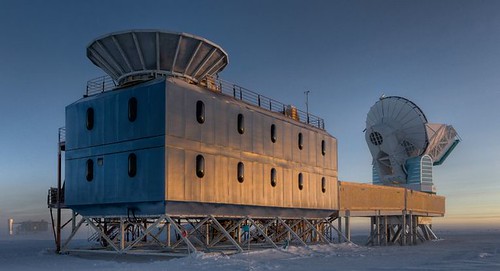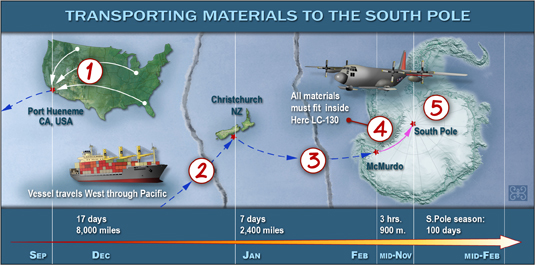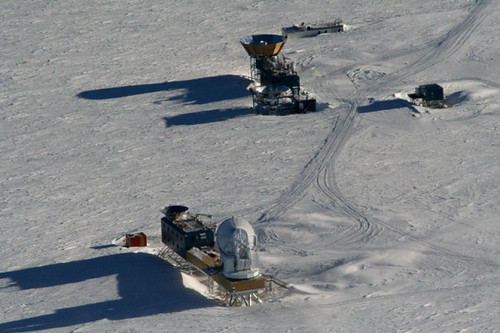Evidence supporting the exponential expansion of the universe known as “inflation” — or, what one researcher calls, “the bang of the big bang”, has been reported.
“These results are not only a smoking gun for inflation,” Harvard astronomer Avi Loeb says in a statement, “they also tell us when inflation took place and how powerful the process was.”
Nature reports it would also be the first imagery of gravitational waves. Gravitational waves squeeze space as they travel, producing distinct left and right-handed polarizations. Gravitational Waves are ripples in spacetime.
“Detecting this signal is one of the most important goals in cosmology today,” said John Kovac, leader of the collaboration between the Harvard-Smithsonian Center for Astrophysics and the BICEP2 telescope that made the findings. BICEP and the Keck Array are cosmic microwave background (CMB) experiments that measure the polarisation of the CMB.
Inflation is believed to have happened in the early slivers of the second during which the universe began. This is reportedly the first direct evidence of this expansion. That would make it the first evidence linking gravity to quantum mechanics, which currently explains each of the other fundamental forces. It’s theorized that these forces were all combined in the earliest measurable phases of the Big Bang.
Scientists now believe there may be an infinite number of parallel universes and we just happen to live in one of them.
 In January 2008, a century after Norwegian Roald Amundsen erected his small pyramidal tent at the South Pole, the NSF dedicated their newest U.S. scientific station, the Amundsen-Scott South Pole Station, sitting on the very bottom of the world.
In January 2008, a century after Norwegian Roald Amundsen erected his small pyramidal tent at the South Pole, the NSF dedicated their newest U.S. scientific station, the Amundsen-Scott South Pole Station, sitting on the very bottom of the world.
McMurdo Station is the largest Antarctic station. It’s located at 77 degrees 51 minutes S, 166 degrees 40 minutes East.
McMurdo is built on the bare volcanic rock on Ross Island, the farthest point south that is accessible by ship. To get gear to the Amundsen-Scott station on the South Pole, virtually everything has to be flown in by C-130. The telescope was an exception, with an epic journey over the ice more than 5 years ago.
The new $153 million Amundsen-Scott South Pole Station is a technological and engineering marvel. It will support an array of scientific investigations, from astrophysics to seismology. The South Pole is a unique environment for science with extremely dry, cold air. Scientists at Amundsen-Scott are studying:
- Cosmic microwave background – scanning the faint light left by the Big Bang.
- IceCube — an international high-energy neutrino observatory, one mile beneath the ice.
- Monitoring the condition of the Earth’s protective ozone layer using balloons.
- The South Pole Remote Earth Science Observatory (SPRESO), operated by a research consortium of 100 universities is located 5 miles from the Amundsen-Scott Station. It’s the quietest seismic listening post on the planet.
- Biologists study microorganisms that survive the long and cold, dark Antarctic winter while undamaged by high levels of ultraviolet radiation and an extreme lack of liquid water. The results may show what limits there are to living creatures on Earth—and perhaps elsewhere.
The United States Antarctic Program contracts with Raytheon Polar Services and Lockheed Martin for polar services. Communications are enabled through polar orbiting satellites and satphones like Iridium.
Related DailyWireless articles include; Antarctic Expeditions Go Live, Antartic Communications, Winter Solstice, Antartica Adventure and Polar Flight Telemetry
Posted on Mon, 17 Mar 2014 19:48:27 +0000 at http://www.dailywireless.org/2014/03/17/...akthrough/
Comments: http://www.dailywireless.org/2014/03/17/.../#comments




